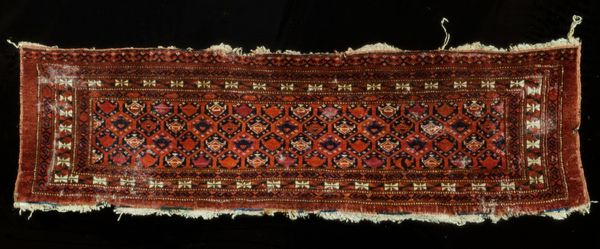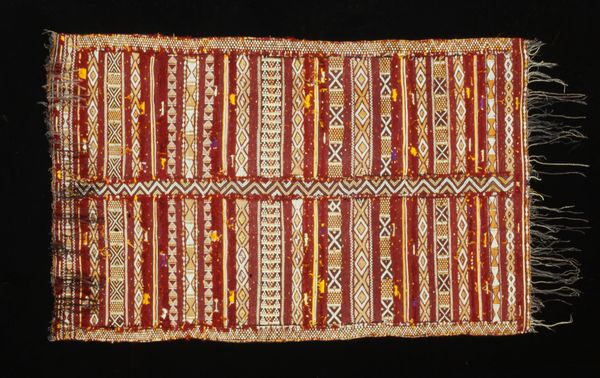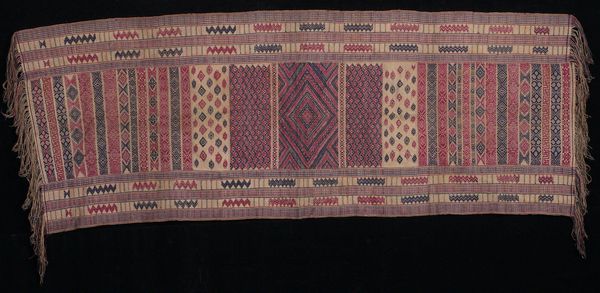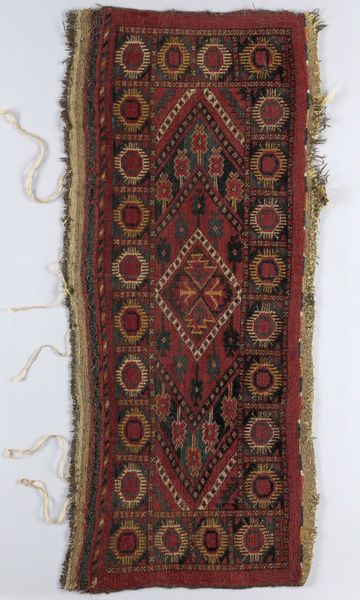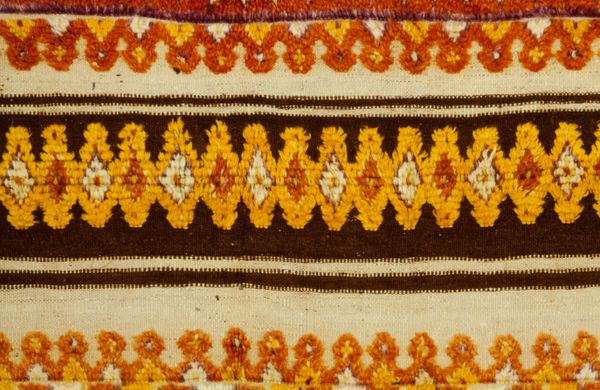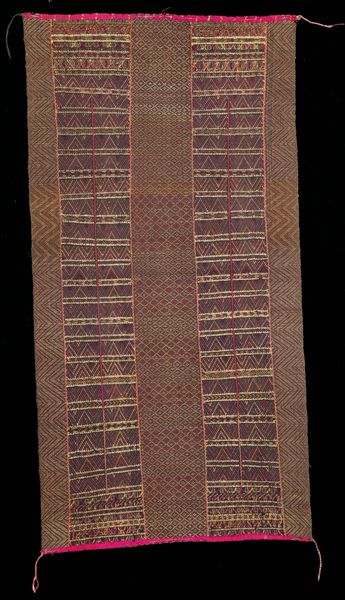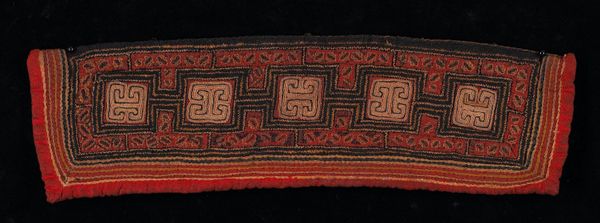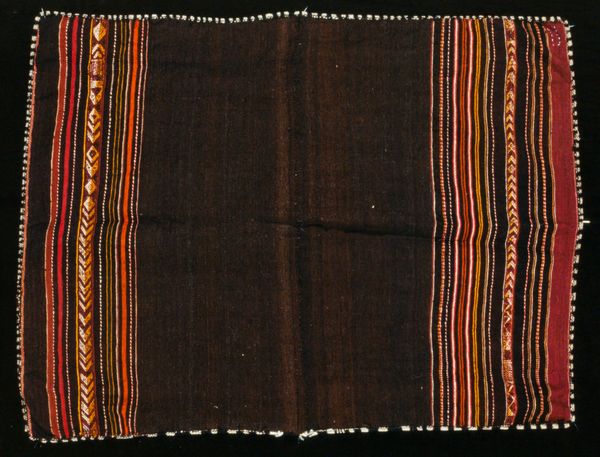
fibre-art, textile
#
fibre-art
#
textile
#
islamic-art
Dimensions: 8 1/2 x 19 3/16 in. (21.59 x 48.74 cm) (without metal trim)
Copyright: Public Domain
Curator: We are looking at a "Face veil," dating from the early 20th century, currently held in the Minneapolis Institute of Art. It is classified as fibre-art and textile work with Islamic art themes. Editor: The first thing that strikes me is how the dark, weighty fringe contrasts with the lightness of the woven patterns. There is an elaborate, almost painstaking quality to the beaded embellishments, as well. Curator: That intricacy speaks to its potential function within a specific social framework. Face veils, beyond being a garment, can denote status, identity, and adherence to cultural norms. This one offers a compelling insight into early 20th-century Islamic practices surrounding modesty and social standing. Editor: I find myself wondering about the labour involved. Who crafted it? What were the conditions they labored under? Considering the precision of the stitching and beadwork, there’s a real investment of time and skill. Were these made by individual artisans, or as part of a collective, perhaps in a workshop setting? The sourcing of the materials - fibres and beads - is equally interesting, where were these materials acquired? How were they distributed and commodified? Curator: Excellent questions. Delving into the provenance reveals layers of influence - potentially imperial dynamics that affected access to certain materials, or the circulation of design motifs across regions under colonial administration. Even something as simple as the color choice could carry significance beyond aesthetics. Editor: It really highlights the contrast between this intimate garment, crafted so meticulously by hand, and the broader sweep of geopolitical forces impacting its creation. It's a potent reminder of how global exchange touches even the most personal aspects of culture. Curator: Exactly. The veil exists as both an individual expression and a public declaration, embedded within a network of social and economic conditions. The choice to wear such an object reflects not only personal belief but also the negotiating of complex cultural expectations. Editor: So, through its materials and the techniques, we gain a rich glimpse into the circumstances of its creation and its place in a much larger world. Curator: Indeed. By exploring the object's history and cultural significance, we recognize that it represents both a form of agency and a response to prevailing norms.
Comments
No comments
Be the first to comment and join the conversation on the ultimate creative platform.
